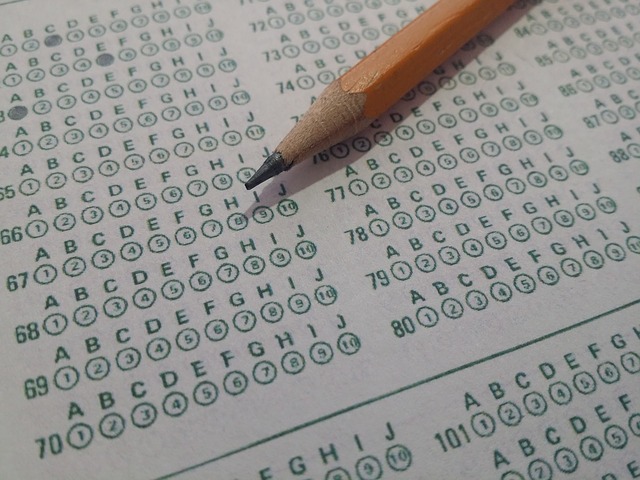What are the TIR and the QAS, and How can they Help Students?

For many students, their ACT and SAT score reports leave them with more questions than answers. “What types of questions did I get wrong?”; “What should I study to do better next time?”; “What types of mistakes did I make?”. These are all very good questions that all students should ask themselves before they start preparing for their next exam, and the answers may be available in the form of ACT’s Test-Information Release (TIR) and the SAT’s Question and Answer Service (QAS).
ACT’s Test-Information Release
ACT’s Test-Information Release is an additional report that students can order for $22 when registered for the April, June, or December exams (the report is also available for the July 2020 ACT as a result of the cancellation of the April 2020 exam). The TIR provides students with a full copy of the exam, along with an answer sheet showing that student's selected answers and an answer key with the correct answers. Although this report can be a powerful asset in preparing for their next exam, students should be aware that they may not receive their copy of the TIR until approximately four weeks after their scores are released; this means that students may not always be able to use the TIR as a resource ahead of the next available test. The TIR is available as an add-on purchase at the time of registration or can be requested up to six months following a student’s exam date by filling out this form from ACT’s website.
SAT’s Question and Answer Service
The SAT’s Question and Answer Service is very similar to ACT's Test-Information Release: it is also available to students for three exams per year (March, May, and October) and provides students with a copy of all test questions, their selected answers, and the correct answers for each question. Additionally, it provides students with information on each question’s difficulty level and question type. Unlike the TIR, however, SAT’s Question and Answer Service is provided digitally, meaning the the service will be available to students immediately upon the release of their score. Students can purchase the Question and Answer Service for $18 during registration or up to five months after the student’s test date by logging into their College Board account and selecting “Order Now” under “My Score Reports”.
SAT also offers another answer service called the Student Answer Service (SAS) that is available for all test dates at a cost of $13.50 and provides students with all of the same materials as the QAS but excludes access to the test’s questions. Personally, I believe the SAS's value is debatable: it does provide general information that can help students identify some of their strengths or weaknesses, but the data is often too vague for students to develop specific study plans. For example, an SAS report may inform a student that they picked answer choice A when the correct answer was answer choice C on a medium difficulty “Heart of Algebra” problem. The good news is the student now knows to work on their algebra skills, but unfortunately, “Heart of Algebra” is a broad description that encompasses a wide variety of content, which could lead to the student spending time reviewing content he or she has already mastered.
How to Use the QAS and TIR to Study
As students rush to view their scores, many students fall prey to temptation and immediately look to see which questions they got wrong on the exam and what the correct answer was. Instead, I recommend students take some time between viewing their scores and reviewing any questions. Seeing scores for the first time after taking the ACT or SAT can be an exciting (and/or nerve racking) experience for a student; this emotion can make it difficult to objectively look at each question. Further, these are NOT questions that students should simply skim through, only noting what the correct answer was.
Instead, I encourage students to set aside a block of time later in the day or during the week to sit down and attempt each question they missed without checking their original answer or looking at the answer key. Afterwards, students can compare their current answers to their original answers, as well as to the correct answers, and consider the following:
- If they answered the question correctly while reviewing the test, was it because of a difference in how they approached the problem, knowledge gained since the test, or was the initial error a careless mistake? For students who are unsure, they might want to analyze their initial answer to see what might have led them to it. This can help students prioritize their studies, identify the types of errors they are prone to, and develop strategies to mitigate those types of mistakes.
- If they still answered the question incorrectly, what type of question is it? Some reports will give a general description of the question type, but try to be as specific as possible. For example, if students can identify that the question was about verbs, that will be far more helpful in their studies than knowing it was a question about “Standard English Conventions”. If students have trouble identifying a question type, there’s no need to worry. Ideally, students can always turn to a teacher or tutor for help recognizing a particular topic, but students can always come up with their own way to describe the question and identify more questions like it. Once students know what types of content they struggle with, they can focus on those specifically and work to build up their skills in those areas.
Ultimately, the TIR and the QAS are valuable services that should certainly be considered as students plan their test dates, especially if they are taking the test for the first time. The feedback these reports provide cannot be overstated: they provide students with an additional resource to review questions, track their results, and make the most of their time spent studying.


